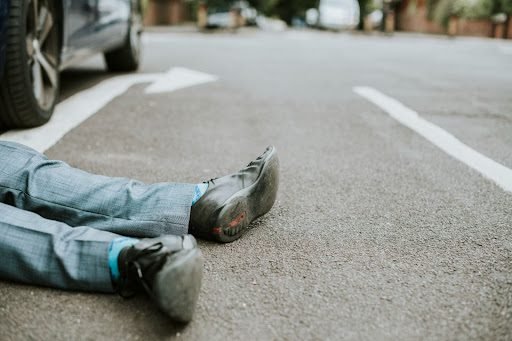In Bridgeport and other urban areas, pedestrians walk with a sense of trust—trust that vehicles will stop at red lights, yield in crosswalks, and follow the rules meant to protect lives. When that trust is shattered by a hit‑and‑run crash, especially one that ends in death, the grief is matched only by the frustration of not knowing who is responsible.
This guide breaks down the steps families can take after a fatal pedestrian hit‑and‑run, with a focus on protecting their rights, preserving evidence, and pursuing justice.
Table of Contents
What to Do Immediately After a Fatal Hit-and-Run
If you are a loved one or surviving family member of a pedestrian hit and killed in a hit-and-run crash, here are the first steps to take:
File a Police Report and Cooperate with Investigators
The police should be notified immediately. Officers will document the scene, gather witness statements, and try to obtain surveillance footage from nearby businesses or traffic cameras.
Make sure to:
If the police are slow to act or fail to make progress, speaking with a private investigator or attorney may help move the process forward.
Secure Legal Representation
While law enforcement handles the criminal investigation, a wrongful death attorney focuses on the civil side, holding the driver (if identified) accountable and securing compensation for your loss.
If you’re looking for guidance in this situation, a firm experienced in legal injury in Bridgeport cases can help you understand your rights and begin legal proceedings while the investigation continues.
Preserve All Evidence
Time is critical. The longer you wait, the harder it becomes to recover key evidence. Family members should collect and store:
Even if you’re unsure whether something matters, save it. Your attorney can sort out what’s relevant.
What If the Driver Is Never Caught?
A common and painful question is: What if no one is ever arrested?
While it might feel like there’s no way to get justice, there are still options:
Uninsured Motorist (UM) Claims
Connecticut law requires auto insurance policies to include uninsured motorist coverage. If the victim had their policy (as a driver or pedestrian) or was covered under a household member’s plan, that coverage might apply.
UM claims can help families recover for:
It’s worth checking every available policy—even if the pedestrian didn’t own a car.
Victim Compensation Programs
Connecticut offers a Crime Victim Compensation Program that can provide limited financial help for surviving family members. Covered expenses include funeral costs, loss of support, and counseling.
Legal Claims Families May Pursue
When a pedestrian dies due to a hit‑and‑run, families may be able to bring a wrongful death claim under Connecticut law.
Here’s what that typically involves:
Wrongful Death Lawsuit
This civil claim is filed by the executor or administrator of the deceased’s estate. If successful, damages can cover:
Connecticut’s statute of limitations for wrongful death is two years from the date of death, and no later than five years from the act or omission that caused it. Don’t delay.
Survival Action
In some cases, a separate claim may be brought for damages the victim could have recovered had they lived, especially if they survived for a time after the crash. These are typically joined with the wrongful death case.
Emotional Support and Community Resources
Legal action is one path, but healing also means addressing the emotional toll.
For many families, the sudden loss of a loved one especially under violent, unjust conditions leaves lasting trauma. Counseling can help process grief, and local support groups for families affected by traffic violence may offer comfort.
Justice, Even Without Closure
Not every hit‑and‑run results in an arrest. And even when the driver is caught, it may not bring full peace. But families still deserve the truth, support, and the ability to rebuild after such a painful loss.
Whether through a criminal conviction, a civil lawsuit, or financial compensation from an insurance claim, justice can take many forms.
What matters most is that families know they are not alone, and that action legal or otherwise is available to honor the memory of their loved one and hold reckless drivers accountable.
Final Thoughts
Pedestrian hit‑and‑run crashes leave more than just unanswered questions. They leave a trail of grief, financial stress, and often a deep sense of injustice.
Start by working with law enforcement, then contact an attorney experienced in legal injury in Bridgeport cases. Preserve all evidence, explore available insurance claims, and don’t hesitate to seek emotional support.
The road to recovery may not be easy, but it can be clearer with the right guidance. Your voice matters and the law provides tools to help you move forward.


